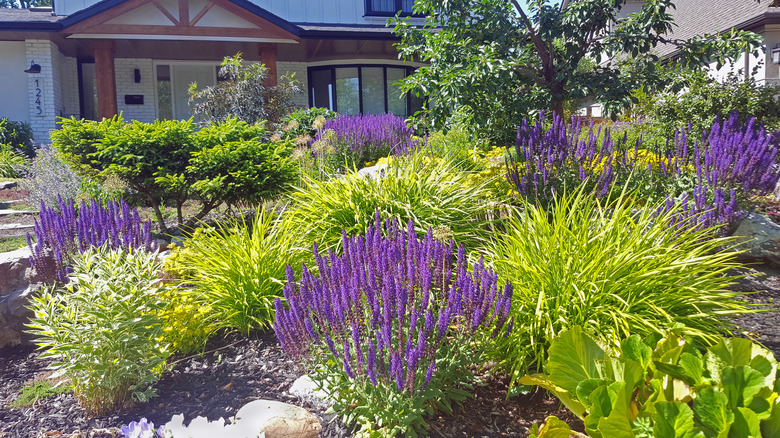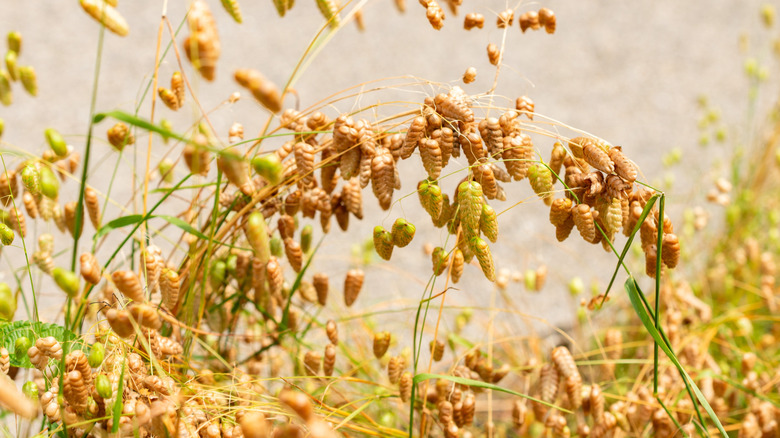Add This Drought-Tolerant Ornamental Grass For Its Beautiful Color & Texture
If you're looking to add color and texture to your garden without constant watering, few plants deliver like greater quaking grass (Briza maxima). With its wheat-like seedheads that swirl in the slightest breeze and its pale green foliage, this ornamental grass catches the light. The result is a planting that feels alive with movement, all while thriving in drier soil where fussier ornamentals might fade.
Native to southern Europe and certain regions of North Africa and Asia, greater quaking grass is recognized for its unique, overlapping seedheads that resemble small pendants. Each of this annual plant's flower heads dangles from its thin stems, adding to the pendant-like appearance and giving the grass a gentle, shimmering effect as it turns from green to gold. The plant can be used for mass plantings and grows to a compact height of 2 to 3 feet. It needs full sun to grow its best, but that's a small price to pay for a whimsical grass that resists poor soil.
Greater quaking grass is one of many colorful ornamental grasses to add to your landscape because it is a rare combination of beauty and practicality — often found thriving with little care while enhancing the appearance of the areas it inhabits. For those who prefer gardening that isn't high maintenance, greater quaking grass is an effortless way to introduce a little character to your yard without sacrificing sustainability.
Why greater quaking grass deserves a place in your garden
Greater quaking grass doesn't just look good; it also has useful qualities that make it an excellent choice for modern gardens. This stunning ornamental grass will be popping up everywhere in 2026 gardens. It grows easily from seed, whether it's started indoors or sown in the garden, which is sure to be a positive for any gardener looking for an alternative to other ornamental grasses. But this is just one of the advantages to growing ornamental grasses in your yard and garden.
Greater quaking grass also thrives best in sunny, open areas with dry to moderately moist soil, and its fine, lance-shaped leaves and distinctive seedheads — which are often compared to rattlesnake tails — look great fresh and dried. Once it's established and reaches maturity, its seed clusters become variations of gold, copper, and tan, adding deep and rich tones to any late-summer garden as your spring and summer blooms die back.
However, California gardeners should be aware that greater quaking grass has spread throughout the state and can act invasively in some areas, particularly in grasslands and coastal dunes, where it can displace native orchids and herbs. To prevent unwanted spread, it is important to remove seedheads before they drop, especially in wild or naturalized landscapes. With a little attention and the right placement in your garden, greater quaking grass can be a resilient ornamental addition to your yard.

